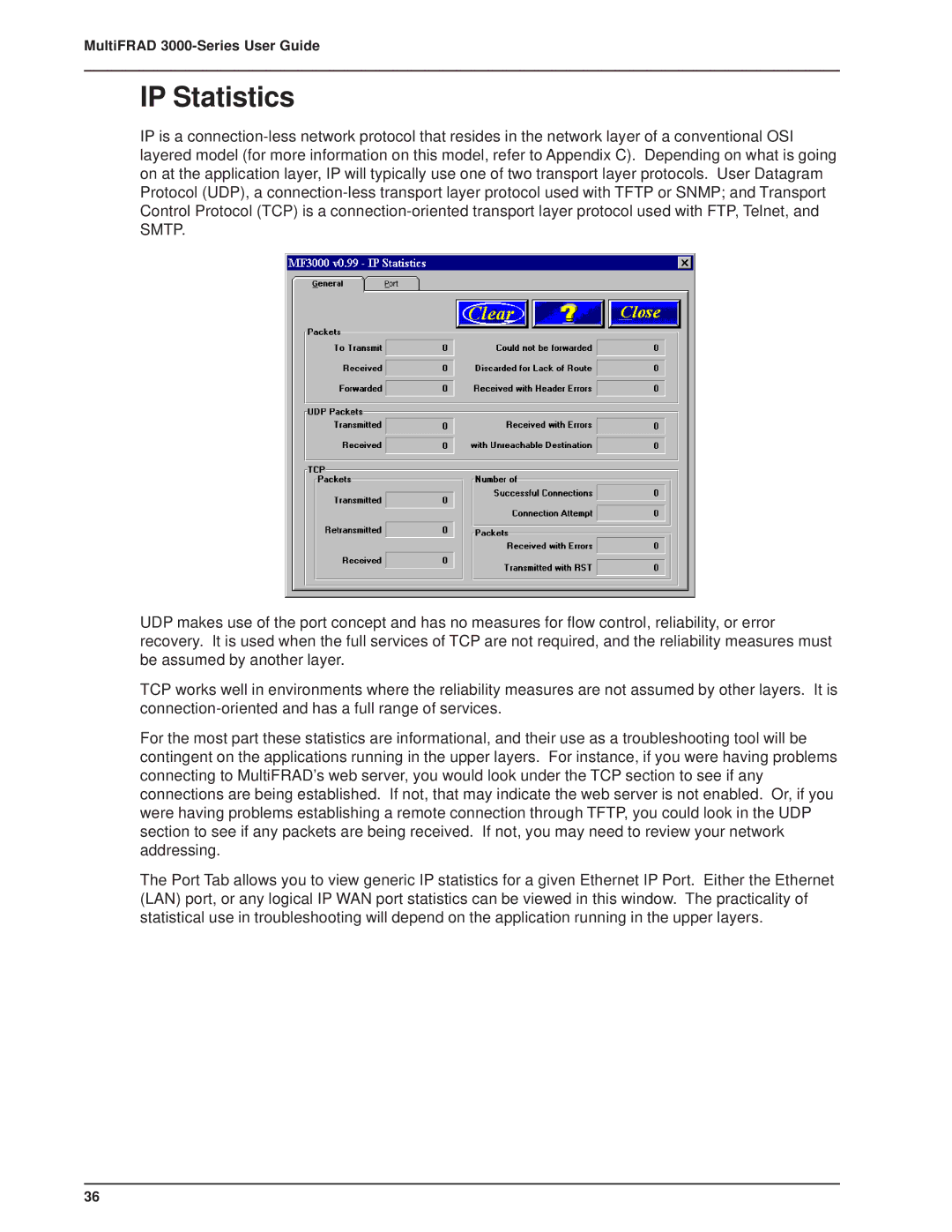
MultiFRAD 3000-Series User Guide
IP Statistics
IP is a
UDP makes use of the port concept and has no measures for flow control, reliability, or error recovery. It is used when the full services of TCP are not required, and the reliability measures must be assumed by another layer.
TCP works well in environments where the reliability measures are not assumed by other layers. It is
For the most part these statistics are informational, and their use as a troubleshooting tool will be contingent on the applications running in the upper layers. For instance, if you were having problems connecting to MultiFRAD’s web server, you would look under the TCP section to see if any connections are being established. If not, that may indicate the web server is not enabled. Or, if you were having problems establishing a remote connection through TFTP, you could look in the UDP section to see if any packets are being received. If not, you may need to review your network addressing.
The Port Tab allows you to view generic IP statistics for a given Ethernet IP Port. Either the Ethernet (LAN) port, or any logical IP WAN port statistics can be viewed in this window. The practicality of statistical use in troubleshooting will depend on the application running in the upper layers.
36
